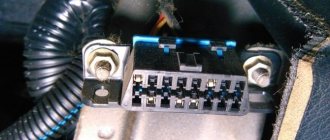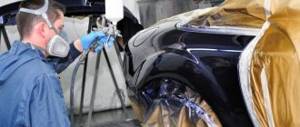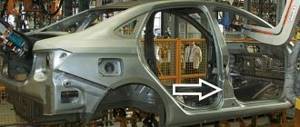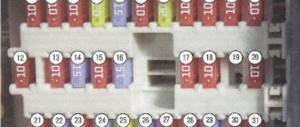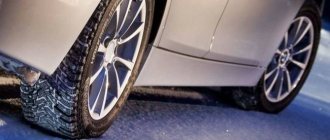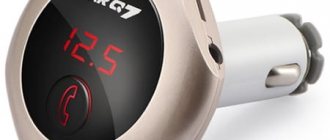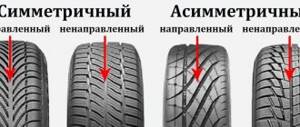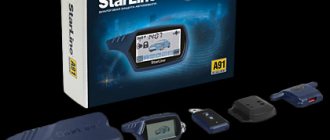Today we will talk about tire markings and decoding their designations, and even a little more, we will learn a lot of useful information about tires, since in this post I will try to collect the most requested information by car enthusiasts regarding car tires, which is scattered all over the Internet, but so that it is clear, It’s convenient and accessible to read everything about tires, then you have to go from site to site to find the necessary information and spend a lot of time, then all the data on tires for the car will be collected in one article.
Marking of car tires and decoding of symbols
Well, let's start, as they say, with the most important thing: the marking of car tires and its decoding. As a rule, when purchasing tires, most car owners use only the tire size parameters
- Height
- Tire width
- Tire size
- As well as seasonality: winter, summer, all-season
But besides this, there are many more parameters of car tires that tire manufacturers indicate on the car tire itself, for example, the tire load index by weight, or the speed index.
Tire markings - what do the letters, numbers and colored marks on tires mean?
On tires, in addition to information about the manufacturer, you can find many interesting markings regarding size, load capacity, tire design and other parameters that are quite important when choosing car tires. Let's look at the most common tire markings.
Standard tire markings
The tires contain type markings 185/60 ZR14 82 H XL .
In this case, the number 185 will mean the width of the tire profile in millimeters .
The number 60 is considered the height of the tire profile in the world. However, this is not quite true. In fact, the ratio of the tire profile height to its width in % . For our roads, tires with a ratio of 65 to 75% are most suitable. The lower this number, the lower the profile of the tire, and the more difficult it is to operate in non-ideal conditions of domestic roads.
The width and height of the tire profile is of great importance for the driving performance of the car. When installing a tire of greater height and width, the car will become softer, the likelihood of damage to the disk is reduced, and the load on the bearings and suspension is reduced. By choosing wide tires for your car, you will get: good contact of the car with the road surface, good cornering at high speeds, improved acceleration and braking characteristics. But the disadvantage in this case is the high price, increased fuel consumption, as well as a slight increase in weight, especially in cars with low-power engines (up to 1-1.5 liters). In general, wide tires are suitable for fast and powerful cars, not for city runabouts.
“Z” means that this tire is designed specifically for high-speed driving (over 240 km/h) . On regular non-speed tires, the letter “Z” is missing.
Next comes the designation “R” - this is a radial tire , as opposed to a bias tire. By the way, diagonal tires are practically no longer produced.
14 is the inner diameter of the tire in inches, where the tire meets the rim of the wheel (fitting diameter). In this case, the tire mounting diameter is 14 inches and the wheel rim for it must be chosen with the same diameter. See Tire and Wheel Size Conversion Chart.
The number 82 is load-carrying capacity index (maximum wheel load capacity), determined in accordance with the Industry Standard Maximum Load Capacity chart. An 82 tire will safely support 1,047 pounds (475 kg). The four tires together can support a fully loaded vehicle with a maximum total weight of 4,188 pounds. (1900 kg). Most cars have information on the driver's side door jamb about the vehicle's load capacity as well as the appropriate tire size for that vehicle.
The letter H is a speed index , which can be designated by the following letters: L (up to 120 km/h), M (up to 130 km/h), N (up to 140 km/h), Q (up to 160 km/h), S (up to 180 km/h), T (up to 190 km/h), U (up to 200 km/h), H (up to 210 km/h), V (up to 240 km/h), W (up to 270 km /hour), Y (up to 300 km/hour). The speed rating letters indicate the maximum safe speed that the tire can sustain under ideal conditions over an extended period of driving.
“XL” or “Extra Load” are reinforced tires among tires of their standard size.
American tire markings in millimeters and inches. Converting American tire sizes to European ones
American tires are sometimes labeled as European tires - like 185/60 ZR14 . However, the numbers are preceded by a letter, for example P 185/60 ZR14 . Moreover, the letter P denotes tires for a passenger car . LT (Light Truck) designates tires for Jeeps, pickups and light trucks. T - spare or temporary tires. Please note that these symbols are placed only on American-made tires .
American tires manufactured for the US domestic market are marked in inches. The American marking in this case looks like 32x12.5 R17 , where 32 is the tire profile width in inches, and 12.5 is the profile height in inches. Which corresponds to “European” size tires - 320/65 R17.
Additional tire markings
The umbrella sign, as well as the labels “Rain”, “Water”, “Aqua”, “Aquatred”, “Aquacontact”, mean special rain tires for confident driving on wet roads.
Winter tires, as a rule, have special markings, most often this is a “snowflake” sign or the inscription “Frost”.
All-season tires are designated by the abbreviations "MS" (Mud&Snow - mud-snow), "All Season", "AS", "AW" (Any Weather - any weather).
Temperature (A, B or C) - heat resistance at high speeds (A is the best indicator, C is the worst).
Traction (A, B or C) - the quality of braking on a wet road (A is the best indicator, C is the worst).
The marking TL, "Tubless" means tubeless tires .
TT, “Tube type” (“Mit Schlauch” - on German tires) is a marking for tube tires .
“RSC” (RunFlat System Component) - tires on which, even if damaged and lacking pressure, you can drive from 50 to 150 km without exceeding a speed of 80 km/h. Run-flat tires are designated differently by different manufacturers:
- Run Flat - Nokian;
- RFT - from Bridgestone;
- RunOnFlat - from Goodyear;
- ZP - from Michelin;
- SSR - from Continental.
"Steel" refers to tires with steel cord .
"PR" - frame strength . For passenger cars this figure is 4PR OR 6PR, for light trucks and minibuses - 6PR or 8PR.
"Reinforced" or "RF" - 6-ply reinforced tire . “C” is an 8-ply reinforced tire for trucks.
“Max Pressure” - the maximum permissible air pressure in the tire (kPa).
“Max Load” - maximum permissible load on the tire (kg).
The “Rotation” mark and arrow on the tire sidewall indicate the recommended direction of wheel rotation for treads with a symmetrical directional pattern.
The “Outside” label shows the outside of the tire with an asymmetric tread pattern , and the “Inside” label shows the inside.
The date of manufacture of the tire is four numbers circled in an oval. The first two digits indicate the week, the second two digits indicate the year the tire was manufactured. For example, if the date is shown as "0512" it means February 2012 .
As for domestic tires, they are usually marked with only two indicators: production date and production series.
Colored markings on tires
Colored marks are put down by the tire manufacturer and carry important information. Tires are most often marked in four colors – red, yellow, white and blue.
Most often you can see a white mark in the form of symbols enclosed in a small circle. A white marker is placed by the person checking the compliance of the released product with the standards. In its own way, this mark is equivalent to the Quality Control Badge.
The red marker has a double meaning. Typically, tires marked this way are those used on a vehicle's original equipment, and the small red circle indicates the heaviest area of the tire body.
barely noticeable yellow marker indicates the light part of the tire. This section of the tire must correspond to the position of the spool on the tube. This mark is useful for tire shop specialists, as it facilitates the process of wheel balancing.
Colored tags used by car tire manufacturers are most often installed exclusively for car service specialists. The common man does not need to know their designation.
colored stripes are applied to the tire tread along its entire length . They are necessary for warehouse workers to group tires of the same size and manufacturer. In addition, the colored stripes demonstrate to the consumer that the tire has not yet been used. When driving a car, these stripes are simply erased on the road surface.
Read with this article:
Tire treads - classification, pattern, features
Winter tires - tread pattern and features of winter tires
“Spikes” or “Velcro” - which winter tires are better?
How to use tires to extend their service life
Aqua tires, also known as Rain tires, “on water as well as on dry land”
Tire indexes decoding
The tire load index is the load in kilograms on each wheel of the car, here is a table of the tire load index
The tire speed index is the normalized vehicle speed at which the rubber retains its properties and remains guaranteed to be reliable and intact; here is the tire speed index table
Since some people transport quite large loads and this parameter is important for them, so that when the car is loaded, the tire simply does not get torn apart from the weight while driving, these are the parameters
For example, the Hyundai Santa Fe crossover has tires of 235/65/17 load/speed index 98H - this means that the tire width along the tread is 235 mm, the height is 65% of the width (approximately 152 mm), and the diameter for the disk is 17 inches, the load that each can withstand is separately according to table 98 = 750kg. on the wheel and the speed index H = e is more than 210 km/h, that is, it is better not to accelerate above this speed because it is fraught.
Here is a mixed table of tire markings and decoding of their load speed designations
Speed indices
Also, tire manufacturers are required to provide all tires with a speed index. This sign can be found immediately after the wheel size indicator. It talks about the maximum speed you can travel on the roads. A table that deciphers the speed index of passenger car tires will help you read this sign correctly.
| Tire classification by speed | |||||||||
| Designation | N | P | Q | R | S | T | U | H | V |
| Speed | 140 | 150 | 160 | 170 | 180 | 190 | 200 | 210 | 240 |
Types of car tires by season
Also, when buying tires for your car, you should know the seasonality of the rubber.
- Summer
- Winter
- All-season
As a rule, a symbol is placed on tires for this definition.
Snowflake - winter or the inscription Winter , if for example there is a snowflake in a triangle and next to the inscription M+S - that means - a snowflake in a triangle - a tire for the European Union, a snowflake - winter, M + S - with lugs for mud and snow .
Sun – summer or Summer
M+S - stands for Mud and Snow - mud and snow, or winter-summer it is simply an all-season tire, although in fact M+S is not an indicator of seasonality, it only indicates that the rubber composition is intended for both snow and snow and dirt
All-season tires usually have AS (all season), R+W (road and winter), AGT or icons for all seasons and weather
Additional signs
In addition to all the basic alphanumeric designations, various additional symbols are also applied to the rubber, showing distinctive performance characteristics:
- the umbrella sign, as well as the words “Rain”, “Water”, “Aquacontact” indicate that the tire is specially designed for use in wet weather, during rain;
- the sign * (snowflake) or the inscription Frost mark studded winter tires or tires with a special winter tread (read about how to choose winter tires for a car);
- demi-season tires are marked with the letters MS (Mud and Snow), AS (All Seasons) or AW (Any Weather);
- designation Temperature A (can be B or C) - an indicator of resistance to high temperatures at high speed. C - lowest resistance;
- The TL marking means tubeless, that is, tubeless tires, most products now are just like that, which means that when punctured they deflate very quickly. However, there is a special type of tire, labeled RSC (Run Flat System Component), on which you can drive from 60 to 140 km even with a puncture or without tire pressure. In this case, the speed must not exceed 75 km/h;
- The TT (Tube Type) marking indicates that the tire is tube-type. German tires of this type are marked MS (Mit Schlauch);
- tires that allow you to drive a short distance without air pressure inside the product (read about tire pressure sensors) are labeled differently from different companies. RSC - Nokian, RFT - Bridgestone, RunOnFlat - Goodyear, SSR - Continental, ZP - Michelin;
- designation Traction A (can be B or C) - shows the length of the braking distance on a wet road. The C indicator here means the longest braking distance;
- tires with metal cord are designated by the word “Steel”;
- PR marking - the strength of the product frame is designated 4PR, 6PR or 8PR. 4−6 PR - for cars, 6−8 PR - for small trucks and jeeps;
- “Max Pressure” marking - shows the maximum pressure that can be supplied to the tire (kPa);
- an arrow on the side surface of the tire or the inscription Rotation with an arrow shows its direction, that is, in which direction the wheel can rotate. Applicable only to symmetrical tread patterns;
- if the tread pattern is asymmetrical, you need to know which side of the tire is the inner and which is the outer: this is important for draining water to the outside of the car. This is shown by the label “Inside” (inner side) and “Outside” (outer side);
- four numbers enclosed in an oval indicate the date of manufacture of the tire. The first two of them show the week, and the last two show the year the product was manufactured. For example, the number 1517 indicates that the tire was manufactured in the 15th week, that is, in April 2017.
Additionally, we recommend reading the article, which explains in detail the designation of the icons on the dashboard.
You may also be interested in our author's article, which talks in detail about how to properly store tires.
Car tire storage
What to do if you have a lot of tires or you changed your car from summer tires to winter tires or vice versa, how to properly store tires
Store only in an upright position - that is, it stands as on a wheel, and not lying on its side
It is better to store the tire in a dark, cool place, not very dry and not very wet, in order to prevent rotting of the cord threads from very high humidity.
If you store the rims in an inflated state, then they should not be exposed to moisture to avoid corrosion between the rim and tire
The optimal storage temperature for automobile tires is +10 +20 degrees Celsius
Humidity not higher than 80%
Expiration date of car tires
According to regulatory documents, the shelf life of car tires is 5 years from the date of their release, but in practice, even if it is older than this period, but was stored in good conditions, it can also be used at your discretion.
Usually the date of manufacture of the tire is placed next to the brand name in a circle or oval, there are 4 numbers, the first two indicate the week and the second year - for example, 2210, this means the 22nd week in 2010 and will be the production date.
By the way, if you purchased tires and you didn’t like them for some reason, you can return them, just like regular goods, within 14 days from the date of purchase, the main thing is that they are in the same condition in which you purchased them.
Car tire service life
According to tire manufacturers, the shelf life or service life of automobile rubber is up to 10 years, but in real life their wear in most cases occurs much faster. On average, the number of kilometers that can be driven on one tire varies from 40-60 thousand kilometers . Depends on driving style, vehicle load, road surface and the composition of the material it is made from.
Car tire repair
As a rule, car tire repair comes down to vulcanization of punctures. Sometimes they even repair quite serious rubber cuts, and even side cuts. But as a rule, after such repairs the tire will no longer be reliable. It will be dangerous to drive it at high speeds, especially if, after repairing a cut, it is installed on the front of the car, and it is also not advisable to overload it with various types of cargo in order to avoid its rupture while driving.
Car tire pressure
What pressure to pump into a car tire. As a rule, this information is on a sign in the driver's door of the car, and this information is also often duplicated on the back cover of the car's gas tank.
Car tire pressure is measured in technical atmospheres –at, which are almost equal to bars bt.
Tire inflation may differ from the parameters specified by the vehicle manufacturer within 15-20%.
Car tire retreading
Back in the 1990s, the so-called tire welding was widespread, when a new tread was essentially hot glued or welded onto a bald tire.
With poor-quality welding, the tread often simply peeled off from the tire - since no technical standards were observed. Nowadays, due to the improvement of cars and as a result of the increase in travel speeds, no one uses welding anymore, it is dangerous for life. Although this method itself has not died, it is actively used by KAMAZ drivers (owners and drivers of KAMAZ vehicles), but the welding done there is an order of magnitude better than on passenger cars.
Tire sizes explanation
Often this refers to the standard size, for example you can find the following designation:
205/55 R16 - this means that the width of the rubber - the part that is adjacent to the asphalt is 205 mm, 55 is the height of the sidewall of the tire, meaning 55% of the width, that is, from 205 mm, which is 205 * 55/100 = 112.75 mm , and R16 - this means the radius of the tire is 16 inches or 40.64 cm, since 1 inch is equal to 2.54 cm, all this can be called a decoding of the tire parameters.
But if we take into account the average, so to speak standard, tires, then here is a table of their weights (car tires, tire markings)
| Tire markings | How much does it weigh in kilograms |
| Diameter 13 inches | |
| 135/80 R13 | 4 |
| 145/65 R13 | 5,2 |
| 145/80 R13 | 5,4 |
| 155/65 R13 | 5,2 |
| 155/80 R13 | 6 |
| 165/65 R13 | 6,1 |
| 165/70 R13 | 6,2 |
| 165/80 R13 | 6.8 |
| 175/50 R13 | 6,3 |
| 175/70 R13 | 6,7 |
| 185/65 R13 | 7,6 |
| 185/70 R13 | 7,6 |
| 195/60 R13 | 8 |
| 215/50 R13 | 9,7 |
| Diameter 14 inches | |
| 145/80 R14 | 5,6 |
| 155/65 R14 | 5.7 |
| 165/65 R14 | 5,9 |
| 165/70 R14 | 6,8 |
| 175/50 R14 | 6,7 |
| 175/70 R14 | 7,2 |
| 175/80 R14 | 7,5 |
| 185/50 R14 | 7,3 |
| 185/55 R14 | 7,4 |
| 185/70 R14 | 8,1 |
| 185/80 R14 | 9,1 |
| 195/45 R14 | 7,4 |
| 195/60 R14 | 8,4 |
| 195/65 R14 | 8,4 |
| 195/70 R14 | 9 |
| 205/60 R14 | 8,9 |
| 205/70 R14 | 10,2 |
| 225/70 R14 | 10 |
| Diameter 15 inches | |
| 145/65 R15 | 5,6 |
| 155/60 R15 | 8,3 |
| 155/65 R15 | 8,3 |
| 165/50 R15 | 6,8 |
| 165/65 R15 | 7 |
| 175/55 R15 | 6,7 |
| 175/80 R15 | 9 |
| 185/55 R15 | 7,7 |
| 195/45 R15 | 7,6 |
| 195/70 R15 | 12,9 |
| 195/80 R15 | 11,3 |
| 205/50 R15 | 9,3 |
| 205/75 R15 | 10,8 |
| 215/60 R15 | 11,4 |
| 225/60 R15 | 10,9 |
| 225/80 R15 | 11,8 |
| 235/70 R15 | 15,1 |
| 255/65 R15 | 18,1 |
| 255/75 R15 | 19,7 |
| 265/70 R15 | 17,5 |
| 265/75 R15 | 17,7 |
| 275/60 R15 | 14,8 |
| 285/40 R15 | 12,9 |
| Diameter 16 inches | |
| 165/50 R16 | 6,6 |
| 175/50 R16 | 7,7 |
| 175/60 R16 | 7,6 |
| 185/50 R16 | 7,5 |
| 195/40 R16 | 7,4 |
| 205/40 R16 | 8,5 |
| 205/80 R16 | 14,5 |
| 215/35 R16 | 8,3 |
| 215/65 R16 | 12,2 |
| 215/85 R16 | 15 |
| 225/40 R16 | 9,1 |
| 225/75 R16 | 15,7 |
| 235/50 R16 | 10,1 |
| 235/85 R16 | 22,3 |
| 245/45 R16 | 11,6 |
| 245/75 R16 | 21,1 |
| 255/60 R16 | 16,5 |
| 255/70 R16 | 18,6 |
| 265/70 R16 | 18,8 |
| 265/75 R16 | 19,9 |
| 275/70 R16 | 20 |
| 285/65 R16 | 19,9 |
| 285/75 R16 | 22 |
| 305/70 R16 | 25,9 |
| 315/75 R16 | 29,4 |
By the way, don’t forget to read about the side cut of the tire and whether it can be repaired, an opinion from experienced tire repairers.
Maximum tire pressure
MAX PRESSURE marking (the inscription itself may be absent, but only numbers) indicates the maximum pressure that the tire can withstand. This tire has a maximum pressure of 350 kPa (kilopascal). Converted to atmospheres, this will be 3.5 atmospheres (at the rate of 100 kPa = 1 atmosphere). Pressure is also indicated in PSI (pounds per square inch). To convert PSI to atmospheres, you can look at a special table:
| PSI | 20 | 22 | 23 | 25 | 26 | 28 | 29 | 30 | 32 | 33 |
| BAR | 1.4 | 1.5 | 1.6 | 1.7 | 1.8 | 1.9 | 2.0 | 2.1 | 2.2 | 2.3 |
| PSI | 35 | 36 | 38 | 39 | 41 | 42 | 44 | 45 | 46 | 48 |
| BAR | 2.4 | 2.5 | 2.6 | 2.7 | 2.8 | 2.9 | 3.0 | 3.1 | 3.2 | 3.3 |
Please note that the tire does not indicate the recommended pressure, but the maximum that the tire can withstand !
Car tire device
A car tire consists of basic elements
- Cord – threads located close to each other and covered with a layer of rubber
- The frame is several cords located next to each other or one on top of the other
- A breaker is a special belt or, so to speak, an insert into the cord under the tread to soften the shock absorption of the tire hitting the road surface.
- Tread - the part of the tire that is in direct contact with the road, the sidewalls and beads, and the side part of the tire that bears a significant load of the vehicle's weight, as well as the vehicle's rolling resistance
Here is a visual photo that clearly demonstrates the structure of a car tire.
Characteristics of an all-season tire
As a rule, when examining the tread of all-season tires, doubts already appear, and a silent question arises: is this a summer tire or a winter one? This is a very correct doubt and the right question, since the main consumer characteristics of all-season tires will be inferior to winter tires (in winter conditions) and summer tires (in summer conditions).
Below we will compare summer and all-season tires based on the main characteristics , in which summer tires will skillfully outperform all-season tires.
All-season tire Summer tire
Dry grip
In this discipline, summer tires will undoubtedly win. Thus, the greater negative profile of all-season tires and the presence of sipes, which are so useful on snow, will hinder reliable performance on dry asphalt. And the higher the temperature, the larger the gap between these tires.
Mileage (tire life)
The rubber compound of all-season tires, weakened either by additional channels and sipes, or by a winter “formulation”, will wear out much more intensively. On hot days, the rubber will literally melt, losing precious millimeters of tread. Summer tires will win.
Noise
Preparing all-season tires for winter will affect the tread, which will have more edges for grip. These same edges will add additional voices to the overall tire noise. The tread of summer tires is calmer - which means they are quieter.
Rolling resistance (and therefore fuel consumption)
Summer tires will also outperform all-season tires here, since the tread pattern is more solid, and the rubber compound is better prepared to reduce heat losses during tire operation.
When it comes to wet grip, depending on the conditions, all-season tires may have a slight advantage or be on par with summer tires.
Car tire brands
There are so many brands and manufacturers of tires that it’s impossible to list them all, we will give just a few examples of the most famous manufacturers in our country
- Bridgestone - Japanese manufacturer
- Michelin - French manufacturer
- Goodyear is a German tire manufacturing company.
- Continental – Germany
- Pirelli - Italy
- Hankook-Korea
- Yokohama – Japan
- Nokian(Finland)
Well, our post - marking tires and deciphering their designations is coming to an end, we hope you found something interesting for yourself in this article and it turned out to be useful to you. And by what parameters you choose car tires, write about it in the comments, or how you deal with punctures and cuts in tires.
Tire markings photo Tire size
tires for winter and summer markings
If this ratio is not specified (for example, 185/R14C), then it is equal to 80-82% and the tire is called full-profile. Reinforced tires with this marking are usually used on minibuses and light trucks, where a large maximum load on the wheel is very important.
R
- means a tire with a radial cord (in fact, now almost all tires are made this way). Many people mistakenly believe that R- means radius of the tire, but this is precisely the radial design of the tire. There is also a diagonal design (denoted by the letter D), but recently it has practically not been produced, since its performance characteristics are noticeably worse.
16
— wheel (disc) diameter in inches. (It’s the diameter, not the radius! This is also a common mistake). This is the “fitting” diameter of the tire on the disk, i.e. This is the inner size of the tire or the outer size of the rim. You can read more about disc marking in the disc marking section.
N
— tire speed index. The larger it is, the higher the speed you can drive on a given tire (in our case IS - N - up to 210 km/h). Speaking about the tire speed index, I would like to note that with this parameter the tire manufacturer guarantees normal operation of the rubber when the car is constantly moving at the specified speed for several hours.
Speed index table
Tire speed index - the indicator indicates the maximum permissible speed at which a car “shod” in these tires can move.
tire markings and decoding of their designations
Load index table
Load index is an indicator of the level of maximum permissible load on one wheel of a car. For any vehicle, both passenger and truck, this indicator is indicated with a large allowance for the permissible weight. Therefore, when buying tires, it is not the most important value. (in the figure above the Load Index is - 92 - 630 kg.). For trucks, buses and other vehicles with a business destination, this parameter greatly influences the behavior of the vehicle. Therefore, ID must be taken into account when purchasing.
Tire load index table
